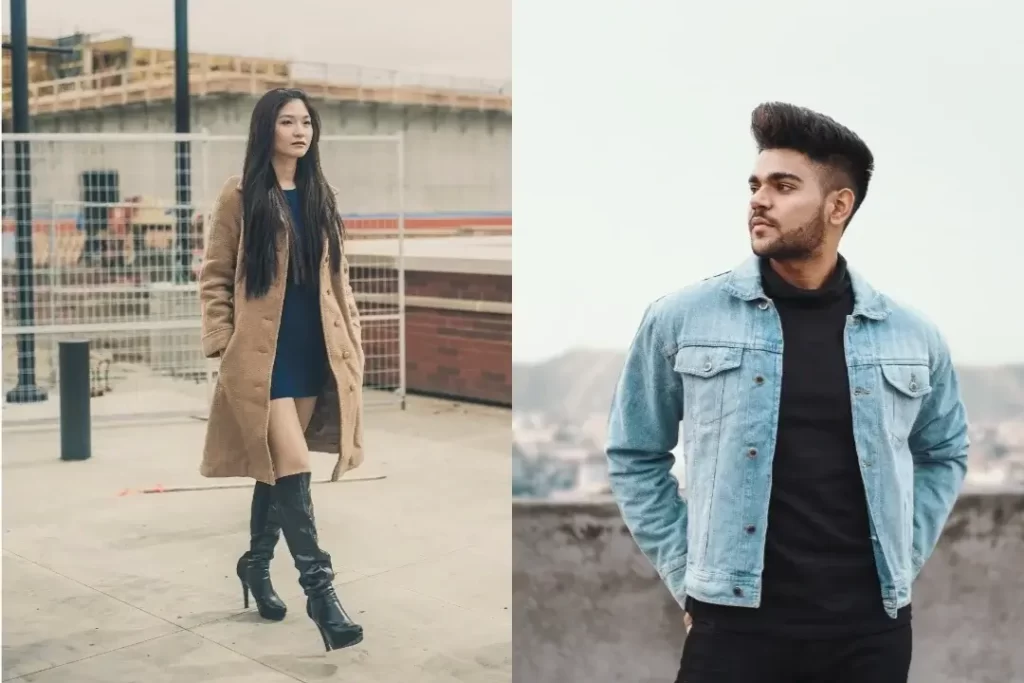
Why Clothing Brands Fail
Top Different Types of Shirts for Women and Men Top Different Types of Shirts for
The Battle of Coat vs Jacket | Understanding the Real Differences!
There has always been a great, ongoing debate – coat vs jacket definition and what truly sets them apart from each other? This article aims to clear the air about such confusion by delving deep into the subtle intricacies that differentiate these two outerwear staples. Read on as we discover the various styles, uses, and appearances of both jacket vs coat; and how you can choose the perfect piece based on individual preferences and situations.
A coat is an outerwear garment designed for warmth, protection, and style, typically extending
down to the mid-thigh length or below. Known for their heavier materials and often insulated
qualities, coats serve as a vital wardrobe item during colder months, guarding you against the
elements while keeping you cozy and sophisticated.

Each type of coat serves a unique purpose and caters to different occasions, weather conditions, and personal styles, ensuring there is a perfect option for everyone.
Elegant dinner parties, business events, and chilly winter outings are amongst the many occasions where a stylish coat fits the bill effortlessly. Knowing which type of coat to wear for each event adds a touch of sophistication and finesse to your overall look, effectively making a statement with your outerwear choice.
Jackets are versatile and lightweight outer garments that provide a more casual look than their coat counterparts. Available in a diverse range of lengths and styles, jackets are typically designed to end at the waist, offering greater ease of movement and flexibility for wearers.

From sporty to chic, jackets cater to a wide range of fashion preferences and can be easily paired with various outfits.
Sporting events, casual hangouts, office settings, and breezy autumn strolls are just some of the occasions where a jacket proves to be the ideal choice for your ensemble. Easily adaptable and functional, jackets can seamlessly compliment your outfit without sacrificing warmth or style.
As mentioned earlier, the main difference between coats vs jacket lies in their lengths. Coats tend to be longer, ranging from mid-thigh to full-length, while jackets usually stop at the waist or slightly below
Coats provide better insulation and warmth because of their heavier materials and thicker linings, which makes them the go-to choice for colder months. And talking about jackets, they like to offer a more varied range of temperatures while also offering a layer of warmth without the added weight.
Coats typically lean towards a more elegant and sophisticated appearance, suitable for formal events or dressing up an outfit. Jackets offer a more casual and versatile look, effortlessly matching with various wardrobe choices to create an array of fashion statements.
When deciding between a coat vs jacket, consider factors such as climate, occasion, and personal style preferences. For instance, – For colder climates or formal events, a coat may be the preferred choice due to its added warmth and elegant appearance. For milder temperatures or casual outings, a jacket might be ideal for its versatility and lightweight feel.
Personal style preferences will also play a significant role, as both coats and jackets come in a plethora of designs that cater to a wide array of individual tastes.

When selecting the perfect outerwear to complement your wardrobe, consider these tips:
Are you aiming for warmth, style, versatility, or protection from the elements? This will help narrow down your options between coats and jackets.
Choose an outerwear option that reflects your unique fashion preferences and complements your existing wardrobe.
Ensure your coat or jacket is made of durable, good-quality materials that will last you multiple seasons.
Make sure the outerwear piece you select fits you well and allows for layering of clothes underneath, if necessary.
Consider the climate and environment you will be wearing your outerwear in, and choose a piece that aligns with those conditions. Will you need something heavier for harsh winters or a more lightweight option for a cool summer evening?
And there you have it! By now, you should have a better understanding of the differences between coat vs jacket, as well as when to wear each one based on occasion, climate, and personal style preferences.
Remember, whether you’re dressing up for an elegant dinner party or dressing down for a casual stroll, your outerwear choice can significantly contribute to your overall appearance and help instill confidence in your day-to-day life.
If you want to learn more about coat click here.
Coats are longer in size and provide more warmth, typically with a mid-thigh to full-length style, but the jackets are designed to end at the waist or slightly below, offering less insulation and more ease of movement.
A coat is more suitable for colder climates and formal events, as its added warmth and elegant appearance make it well-suited for these occasions. A jacket is better for milder temperatures or casual outings, thanks to its versatility and lighter weight.
When choosing outerwear, consider the garment’s purpose (warmth, style, versatility, or protection), personal style preferences, material, quality, fit, and adaptation to weather and environmental conditions, as well as its compatibility with your existing wardrobe.
Go for good-quality materials that provide durability and resistance to wear and tear. Make sure to follow the manufacturer’s care instructions for washing and maintenance of your outerwear, and always store it properly during off-seasons.
Expert Custom Clothing Manufcaturer

Top Different Types of Shirts for Women and Men Top Different Types of Shirts for

What You Must Know About Clothing Samples? Before You Produce a Single Garment: What You

How Much Does It Cost To Make a Hoodie A Complete Cost Breakdown for Custom

Discover the Types of Buttons Discover the Types of Buttons That Transform Style and Functionality
Most Recent Posts
Expert Custom Clothing Manufcaturer
Join our Mailing list!
Get all latest news, exclusive deals and updates.